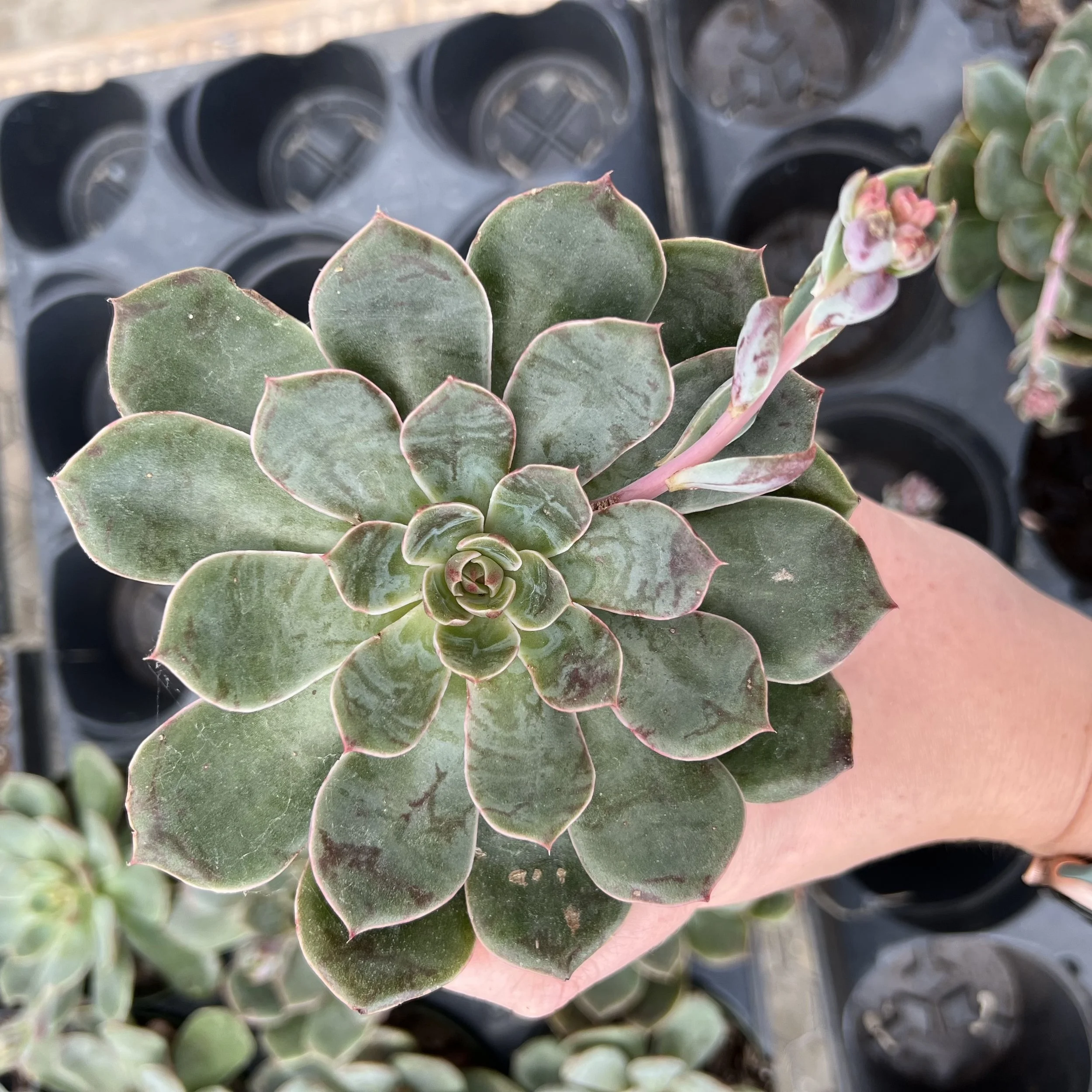
ECHEVERIA
Echeveria
Family Crassulaceae
-
Light: Provide bright, indirect lighting to see signs of active growth in echeveria.
Full, direct sun can lead to leaf scorch. Unlike cacti, they like more filtered light for optimal growth. Some echeveria turn a reddish color the as they are exposed to brighter, more intense light!
Temperature: 50-90 F
Humidity: low
-
Water: Water when the top 2-4” of potting mix feels dry. You may only need to water 1-2 times each month (in winter even less).
Repotting: Repot as necessary every 1-4 years. You may not need to upgrade container size, just refresh potting mix. Growth rate is determined by your plants water and light availability.
Rather than using a “cactus and succulent” potting mix that has no water retention, I encourage the use of fresh general purpose mix in combination with a sparing watering routine.
Fertilizing: Either…
Water Application: Incorporate fertilizer into your watering cycle once per year. Dilute an all purpose fertilizer (20-20-20) by half OR use your favorite fertilizer rated for houseplant use in your water.
Slow Release: Incorporate slow release fertilizer pellets into the top inch of potting soil every 6 months. Apply the rate indicated for indoor plants on the label. If no recommendation for houseplants is present, apply 1/4 to 1/2 the listed rate.
-
Crassulaceae is a huge plant family for succulents, also known as the stone crops. Echeveria is related to several favorites—jade plant, hen-and-chicks as well as saucer plant.
-
(Listed in order of commonality…)
Root decay caused by overwatering
Stretch from low light levels
Mealybugs
Soft brown scale
Aphids
-
Is echeveria pet safe?
Yes
Have a more specific question?
I’m just a few clicks away.



